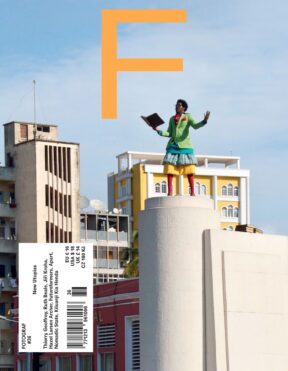#36 new utopias
We understand the phenomenon of Utopia as a problematically broad concept. For this reason we will try to anchor it primarily in the field of political economy, and to present it to the reader through the prism of the most contemporary artistic and theoretical interpretations. Today, the term utopia is often interpreted primarily as a historical term that does not bring much new, and which, in society generally, is primarily related to the past. In the case of visual culture and art, it is particularly associated with modernist architectural visions expressing ideas of the new organization of society. We want to avoid this kind of simplistic approach that buries itself in history. Of course, we cannot ignore some major projects, such as the Black Panthers political movement; Black Mountain College art education; the architecture of the Florentine radical designers, UFO, Superstudio, or 9999; or the projects of Le Corbusier or the Bauhaus school. It is always necessary, however, to offer an insight into how we relate to these ideas today and thus how they are treated in the realm of the image.
Our basis for interpreting the idea of utopia is for us the term commons, or joint sharing. It allows us to play out, in this issue, the search for new utopias in contemporary society. We ask how new possibilities of cooperation, coexistence, and the sharing of resources, information, and commodities are currently reflected in the visual arts (and, in regard to history, what are they drawing on)? We are interested in the fields of community and spiritual life, in new economic networks, radical pedagogy, current visions of the possibilities of the scientific exploration of the world, and in ways of creating new forms of social relations. We would like to try to find answers to what roles and forms of utopia there are in today’s society, which is labeled with so many dystopian terms (e.g. risky or post-truth), and by means of this thematic issue we want to offer a positive survey of possible solutions to current catastrophic data, scenarios and debates. In a time of “permanent crisis,” it is precisely solutions that are so much called for, but they are only rarely presented in art and theory.
From the perspective of visual communication, besides photography, we will also turn more to the new possibilities of depiction that artists work with in order to prefigure new systems of communication and relationships. That is, work with the moving image, video games, and computer animations.
Content
- ––– Intro
- New Utopias
- ––– Topic
- Revising a Vision, or Utopia in the Twenty-First Century
- ––– Project
- Markéta Magidová
- Lenka Glisníková
- Romana Drdová
- ––– Profiles
- Thierry Geoffroy / Colonel
- Apart
- Futurefarmers
- Kiluanji Kia Henda
- Jiří Kroha
- Nomadic State
- Ruth Beale
- Hazel Larsen Archer
- ––– Interview
- Commoning During the Coronavirus
- ––– Wanted
- Natália Trejbalová
- Hanna Samoson
- Polina Davydenko
- ––– Theory
- Utopia - Antiserotonin
- ––– Events
- Struggling With New Contexts
- ––– Institution profile
- Banská St a nica
- ––– Exhibition
- Objects Recognized in Flashes
- ––– Book reviews
- Climate Crises.txt
- When Fact Is Fiction
- Artalk Revue
- Return to the Future
- Cyberphotography
- A Geology of Media
- ––– Artist's Books
- Digital █████ - An Ethnographic Dictionary
- The First March of Gentlemen
- Pillars of Home
- Plane Dreams
- Semiautomatic Photography
- Evokativ
Archive
- #45 hypertension
- #44 empathy
- #43 collecting
- #42 food
- #41 postdigital photography
- #40 earthlings
- #39 delight, pain
- #38 death, when you think about it
- #37 uneven ground
- #36 new utopias
- #35 living with humans
- #34 archaeology of euphoria
- #33 investigation
- #32 Non-work
- #31 Body
- #30 Eye In The Sky
- #29 Contemplation
- #28 Cultura / Natura
- #27 Cars
- #26 Documentary Strategies
- #25 Popular Music
- #24 Seeing Is Believing
- #23 Artificial Worlds
- #22 Image and Text
- #21 On Photography
- #20 Public Art
- #19 Film
- #18 80'
- #17 Amateur Photography
- #16 Photography and Painting
- #15 Prague
- #14 Commerce
- #13 Family
- #12 Reconstruction
- #11 Performance
- #10 Eroticon
- #9 Architecture
- #8 Landscape
- #7 New Staged Photography
- #6 The Recycle Image
- #5 Borders Of Documentary
- #4 Intimacy
- #3 Transforming Of Symbol
- #2 Collective Authorship
- #1 Face





